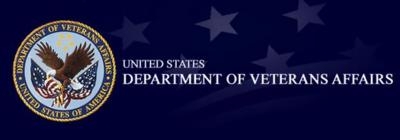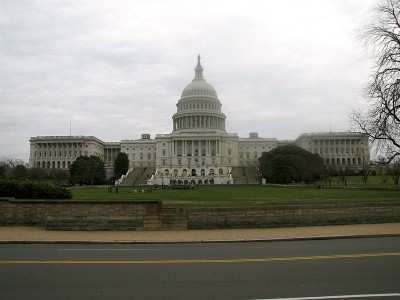Sudden Enforcement Of VA's 85/15 Rule For Flight Training May Reduce Pool Of Potential Helicopter Pilots
(Excerpted from the summer issue of Rotor)
The U.S. House of Representatives is poised to drastically overreact to a loophole in the Post 9/11 GI Bill that Congress itself created. The changes likely to be enacted threaten the ability of veterans to join the aviation industry (especially the vertical-lift sector) — and may cause one of the best potential pools of new pilots to dry up.

HAI Director of Communications and Public Affairs Chris Dancy writes in the summer issue of Rotor magazine that some flight-training institutions took full advantage of the loophole — entirely within the law — and in a comparatively small number of cases ran up eye-popping bills, giving the entire industry a black eye in the view of the general public and prompting the congressional overreaction.
When Congress passed the original Post 9/11 GI Bill, it included a loophole: flight training done at a regular flight school was considered vocational training and was capped at approximately $10,000 per year; a flight-training degree program at a private college was originally capped at approximately $17,000 per year. But for a veteran learning to fly as part of a two- or four-year degree program at a public college, flight-training expenses were treated as fees, for which there is currently no cap. It is this loophole to which Congress is now responding.
Compounding the effects of the loophole has been the Veterans Administration’s (VA) failure to uniformly enforce — or enforce at all — its own regulations for flight-training degree programs designed to bring market forces to bear on pricing. Known as the 85/15 rule, the regulation requires that no more than 85 percent of flight-training students at public schools can attend using GI Bill funds. The theory is that the price sensitivity of the remaining 15 percent, who are using private funds, will hold flight-training fees in check.
VA regional and state educational authorities have given flight schools and public colleges widely varying requirements for complying with the 85/15 rule. According to one HAI member whose operations fall under the jurisdiction of two VA regional offices, it routinely receives differing interpretations from each office. In one instance, a VA official changed the interpretation of the 85/15 rule four times in one conversation.
The original bill, which was eventually rolled into H.R. 475, was introduced by Rep. Brad Wenstrup (R-OH), chair of the Subcommittee on Economic Opportunity of the House Committee on Veterans’ Affairs. This was done, says Wenstrup, at the request of the VA and state approving agencies that oversee education and training programs for vets. The measure caught many in the flight-training industry by surprise because it came out of a subcommittee that almost never deals with aviation issues and has no real aviation expertise.

HAI has met with the subcommittee’s majority staff director, Jon Clark, three times. Clark expressed frustration that he could not find one all-encompassing number for the cost of training a veteran to the point of being employable as pilot in the helicopter industry — that is, having the certifications necessary to gain an entry-level position. HAI polled members who train a significant number of veterans and developed an average cost, based on FAA minimum requirements, to be employable as a flight instructor — the most common entry-level position today.
HAI and its members, collectively and individually, told the committee that $81,000 (the amount to be made available over four years from VA benefits, should H.R. 475 become law) is not enough to pay for the minimum amount of flight training required by the FAA for flight instructors — let alone for tuition and books for a college flight-training degree program.
HAI strongly recommended that the subcommittee delay action on the proposed legislation, direct the VA to enforce its own rules consistently and uniformly, and give market forces an opportunity to work. The subcommittee ignored that recommendation, instead pushing ahead with its legislative solution to cap flight-training benefits and impose guidelines so severe that many colleges and flight schools can’t comply.
As Congress moves closer to legislative action, the VA has finally begun enforcing its regulations, but it has done so in an immediate and heavy-handed manner that is hurting veterans — even those already actively engaged in flight-training programs.
The agency began notifying the administrators of flight-training degree programs who thought they were in compliance with the 85/15 rule that they were, instead, in violation and were immediately prohibited from enrolling any more GI Bill-funded students — even if those students had already been accepted into the program. In at least one case, the school was told to immediately suspend classes until it received an exemption or could show that it was in compliance.

HAI continues to work with House members to try to strip the flight-school language from H.R. 475. Members of the House General Aviation (GA) Caucus (bit.ly/GACaucus) recognize the importance of aviation to the national economy and of veterans as a valuable source of new pilots.
But opportunities to stop this legislation are growing short. It is possible that by the time this article reaches you, the bill will already have reached the House floor for consideration. So HAI is also turning its attention to the Senate and the Senate GA Caucus to bring them up to speed on the hazards this bill poses to veterans’ aspirations to join the aviation industry.
HAI believes that if this cap is put in place, the pilot shortage already hampering the aviation industry will grow even more severe.
 ANN's Daily Aero-Linx (04.15.24)
ANN's Daily Aero-Linx (04.15.24) Classic Aero-TV: 'No Other Options' -- The Israeli Air Force's Danny Shapira
Classic Aero-TV: 'No Other Options' -- The Israeli Air Force's Danny Shapira Aero-News: Quote of the Day (04.15.24)
Aero-News: Quote of the Day (04.15.24) Airborne 04.16.24: RV Update, Affordable Flying Expo, Diamond Lil
Airborne 04.16.24: RV Update, Affordable Flying Expo, Diamond Lil ANN's Daily Aero-Term (04.16.24): Chart Supplement US
ANN's Daily Aero-Term (04.16.24): Chart Supplement US





